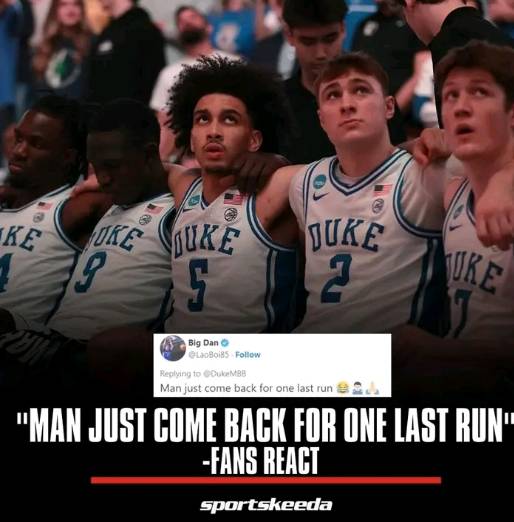As the 2025-2026 college basketball season looms on the horizon, all eyes are turning toward Durham, North Carolina. The Duke Blue Devils, a program with a legacy forged in banners and Final Four appearances, are once again positioned to dominate the national conversation—and possibly the entire Atlantic Coast Conference. Under the leadership of head coach Jon Scheyer, who enters his fourth season following in the footsteps of coaching legend Mike Krzyzewski, Duke’s roster construction signals a perfect storm of veteran leadership, elite incoming talent, and the hunger to reassert its dominance on the national stage.
Scheyer’s Ascent: From Transition to Triumph
Jon Scheyer’s initial seasons at Duke have had their share of ups and downs. After navigating the transition period following Coach K’s retirement, Scheyer has now firmly put his own stamp on the program. From tactical adjustments to a reinvigorated focus on player development and recruiting, Scheyer’s approach is beginning to bear fruit. The 2025-26 campaign represents a potential tipping point—a year where his system, his players, and his vision converge in what may be Duke’s most formidable team in a decade.
Scheyer’s success on the recruiting trail and his ability to retain key contributors from past seasons have positioned Duke as the team to beat not only in the ACC, but perhaps nationally. Let’s take a closer look at the pieces that make up this powerhouse roster.
Returning Core: Leadership and Continuity
The heartbeat of this Duke team lies in its returning players, whose experience in high-leverage moments will be invaluable. At the forefront is Tyrese Proctor, the savvy combo guard who flirted with the NBA Draft but opted to return for one final collegiate season. Proctor’s decision gives Duke an on-court general who is equally capable of orchestrating the offense and locking down elite perimeter scorers.
Mark Mitchell also returns, bringing his two-way versatility to the wing. At 6-foot-9, Mitchell’s ability to defend multiple positions, stretch the floor, and attack the rim makes him a matchup nightmare. His junior year is expected to be his breakout campaign, one that should catapult him into NBA lottery discussions.
Another critical piece is Jared McCain, who became a fan favorite during the 2024-25 season with his fiery competitiveness and knack for clutch shooting. McCain’s dynamic scoring ability, especially from beyond the arc, adds a lethal element to Duke’s offense, and he’ll be counted on to provide consistent production in key moments.
Rounding out the returning impact players is Sean Stewart, the high-flying forward who came into his own as a freshman and is now ready to step into a starting role. Stewart’s rebounding tenacity and vertical explosiveness provide Duke with a much-needed interior presence.
The Newcomers: A Recruiting Class for the Ages
Scheyer has landed yet another top-three recruiting class in 2025, headlined by blue-chip prospects who are expected to contribute immediately. The class includes:
- Koa Peat (PF, 6’8”) – Widely regarded as a top-five player in the 2025 class, Peat brings strength, toughness, and an advanced offensive arsenal. His ability to operate in the mid-post and face up from 15 feet makes him a scoring threat from multiple areas. Peat is also a standout rebounder and vocal leader.
- Isiah Harwell (SG, 6’5”) – A silky scorer with elite shooting mechanics, Harwell may be the best pure shooter in the class. His high basketball IQ and ability to move without the ball make him a perfect fit in Duke’s motion-heavy offense.
- Malik Thomas (PG, 6’3”) – Thomas is a lead guard with blazing speed and a knack for breaking down defenses. His court vision and ability to create off the dribble will allow Proctor to play off the ball at times, creating dual playmaking options.
- Kai Rodgers (C, 6’10”) – A rim-running big with shot-blocking instincts, Rodgers gives Duke size and rim protection off the bench. He’s expected to learn quickly behind the returning post players and could become a major contributor by midseason.
The integration of these freshmen into the already battle-tested rotation could be the key to a deep March run. Each one fills a specific need, and their development will be crucial for Scheyer’s squad to reach its ceiling.
Olivier Rioux: The Towering X-Factor
One of the most intriguing additions to Duke’s roster is Olivier Rioux, the 7-foot-9 Canadian center who captured international attention with his unprecedented height and surprisingly nimble footwork. While Rioux is still considered a long-term project, his presence alone changes the geometry of the court.
Opponents will be forced to alter their approach around the rim when Rioux is on the floor. If he can improve his conditioning and lateral quickness, he could become a devastating force defensively and a lob target in pick-and-roll scenarios. Even 10–15 quality minutes from Rioux each game could shift the balance in key matchups.
Depth and Role Players: The Glue Guys
Behind the stars and freshmen phenoms is a cadre of players who embrace their roles and bring essential ingredients to Duke’s success.
Caleb Foster, the steady guard with a poised demeanor, can step in as a spot starter or sixth man. His perimeter defense and timely shot-making provide a stabilizing presence.
TJ Power, a stretch forward with a high motor and elite basketball instincts, offers spacing and rebounding off the bench. Power’s ability to guard multiple positions also gives Scheyer more lineup flexibility.
Christian Reeves, though still developing, brings a physical edge in the paint. He could be the “enforcer” Duke needs in rugged ACC battles.
Scheyer’s ability to mix and match these role players around the core stars will allow Duke to adapt to any opponent’s style—whether it’s a high-octane pace, a defensive slugfest, or a half-court chess match.
Tactical Identity: Scheyer’s Blueprint Taking Hold
Scheyer’s teams have consistently emphasized defensive discipline, positional versatility, and modern offensive concepts. This year, expect Duke to lean heavily into positionless basketball, switching on defense, and pushing the pace in transition.
With players like Mitchell, Stewart, and Peat who can guard 1 through 4, and guards like Proctor, McCain, and Thomas who can defend on an island, the Blue Devils can smother opposing offenses. On the offensive side, Duke will spread the floor with shooting and rely on ball movement and spacing—mirroring the NBA-influenced system Scheyer has been cultivating.
Scheyer has also proven himself adept at late-game adjustments. His willingness to go small or big depending on matchups—and his increasing confidence in deploying in-game counters—suggests a maturing coach who is learning quickly and adapting faster.
The ACC Landscape: Can Anyone Keep Up?
The Atlantic Coast Conference has seen a resurgence in talent in recent years, with programs like North Carolina, Miami, Virginia, and Florida State making significant strides. But on paper, no team matches Duke’s combination of depth, experience, and incoming talent.
North Carolina, with its own strong core and a deep recruiting class, will pose the fiercest challenge. Miami’s guard-heavy attack will test Duke’s perimeter defense, while Virginia remains a puzzle with its methodical style and Tony Bennett’s defensive schemes.
Still, Duke will enter the season as the unanimous preseason No. 1 in the ACC and a favorite to win both the regular-season title and the conference tournament. The question isn’t whether Duke will be good—it’s whether anyone else can keep up.
Eyes on March: A National Championship or Bust?
With a roster this deep and talented, expectations will be sky-high in Durham. Anything less than a Final Four berth will likely be seen as a disappointment. But this team isn’t shying away from the pressure—they’re embracing it.
“Every day in practice is a battle,” said Proctor in a spring interview. “We’re not just preparing to win the ACC. We’re preparing to win a national championship.”
The sentiment is echoed throughout the program. From veterans returning for unfinished business to wide-eyed freshmen ready to leave their mark, this Duke team has the drive, the tools, and the depth to run the table.



